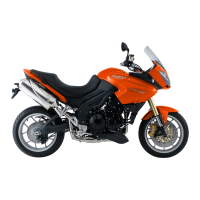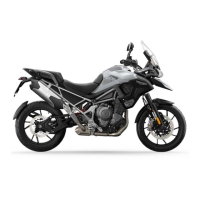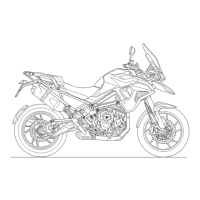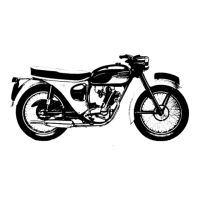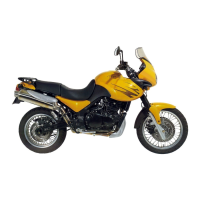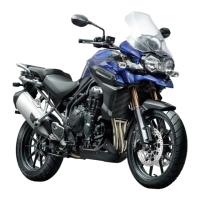Changing Girling Spring Units
TO
INCREASE THE STATIC SPRING RATE
If additional weight
is
added to the rear of the machine such
as
a heavy pillion
passenger and pannier equipment with luggage, the swinging fork member will
position itself above the horizontal. This condition will reduce the springing effect
and to overcome
it,
ahe
main spring poundage in the damper unit can be increased
by turning the spring abutment cam (see Fig.
57)
with the
'C'
spanner (supplied in
the toolkit) to engage the second position, or, if necessary the third position.
CHANGING THE SPRINGS
DISMANTLING
Unit Fixing Bolts. Remove the top and bottom bolts when the unit can be detached.
Dust Cover. Secure the bottom eye between vice jaws on the side faces (protect
the jaws with aluminium clamps). Grip and depress the cover sufficiently to enable
the removal of the split spring retainer collars.
Spring. Remove the dust cover and spring
ASSEMBLY
The assembly
is
carried out in exactly the revetse order to the dismantling sequence
but the following observations should be careluily noted.
Springs. Before replacing, lubricate with high melting point grease
Dust Covers. Ensure that these are not damaged and are completely free from
any foreign matter. Either would cause noisy operation of the unit.
Unit Piston Rod. Do not lubricate with either oil or grease but ensure that the
rod
is
perfectly clean.
Checking Unit Operation. The piston rod should not be operated with the
unit in the upside down position. The movement must be checked in the working
position, otherwise air will pass into the pressure tube causing the oil to emulsify,
resulting in inefficient damping until the unit rectifies itself
MAXIMUM MOVEMENT
The stroke of the units
is
3i"
(9.84
cmr.) and this allows for approximately
16"
(8.0
mm.) compression of the bump rubber.
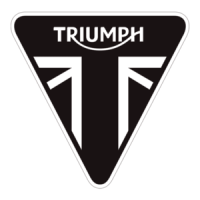
